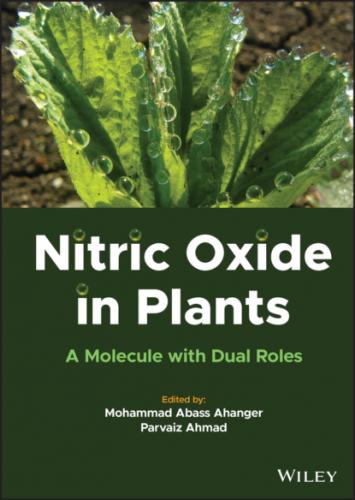Several studies have shown that ABA and NO interact in plant physiological responses and signaling mechanisms (Castillo et al. 2015; Asgher et al. 2017; Wang et al. 2020). Furthermore, NO and ethylene have an antagonistic interaction because NO inhibits ethylene synthesis and action by inhibiting leaf senescence and ripening (Leshem et al. 1998; Manjunatha et al. 2010). However, serious physiological responses to NO interactions with ethylene are being studied in Arabidopsis, Cucumis, and Nicotiana (Ederli et al. 2006). As a result, it is clear that the interaction of NO with phytohormones in abiotic stress tolerance is supported by a variety of evidence. Consider the interaction of NO with various hormones such as brassinosteroids, jasmonates, and polyamines (Liu et al. 2014; Lau et al. 2021; Nahar et al. 2016). The interaction of NO with hormones activates the advanced signal cascade, inducing a variety of responses to environmental stresses.
Despite the fact that there is conflicting evidence regarding the interference mechanism of NO with hormones, future research on the mechanisms of interaction of multiple hormones with NO and their potential pathways is required to be addressed in terms of stress responses and plant growth traits (Table 1.1).
Table 1.1 The physiological role of NO in plants under abiotic stress.
| Plant species | Stressors | Physiological role | Reference |
|---|---|---|---|
| Wheat | Drought | Enhanced drought tolerance | Garcia-Mata and Lamattina 2001 |
| Alianthus altissima | Drought | Enhanced antioxidant defense mechanism, proline and osmolyte metabolism | Filippou et al. 2014 |
| Wheat | Drought | Enhanced seedling growth, high relative water content, mitigation of oxidative stress | Tian and Lei 2006 |
| Crambe abyssinica | Drought | Enhanced NR activity and suppressed ROS and malondialdehyde content | Batista et al. 2018 |
| Arabidopsis | Drought | Early drought responsive processes along with translational and transcriptional reprogramming | Ederli et al. 2019 |
| Bean | UV-B radiation | Decreased H2O2 content, enhanced leaf growth, elevated antioxidant enzyme activity | Shi et al. 2005 |
| Alfalfa | Salinity | Enhanced plant growth and seed germination | Wang and Han 2007 |
| Chickpea | Salinity | Stimulates plant development and antioxidant enzyme activity | Ahmad et al. 2016 |
| Avicennia marina | Salinity | Enhanced photosynthetic activity | Shen et al. 2018 |
| Zea mays | Salinity | Enhanced activity of tonoplast H+- ATPase and gene for Na+/H+ antiporter | Zhang et al. 2006 |
| Cucumis sativus | Salinity | Spermidine accumulation has increased | Fan et al. 2013a |
| Sunflower | Salinity | Seedling growth is improved, and antioxidant activity is increased and reduced ROS formation | Kaur and Bhatia 2016; Arora and Bhatia 2017 |
| Jatropha | Salinity | Improved seedling growth with less oxidative stress and lower toxic ion deposition | Gadelha et al. 2017 |
| Crocus sativus | Salinity | Increased growth due to osmolyte accumulation and antioxidant enzyme activity, as well as increased secondary metabolite synthesis | Babaei et al. 2020 |
| Pea | Salinity | Enhanced chlorophyll content, nutrient uptake, and antioxidant enzyme activity | Dadasoghi et al. 2020 |
| Mustard | Salinity | Increased synthesis of antioxidant enzymes, enzymes for N metabolism, photosynthesis and respiration, decreased H2O2, MDA content, and PCD | Sami et al. 2021 |
| Vigna radiata | Salinity | Increased activity of proline, total amino acids, reducing sugars, modulates antioxidant enzyme activities, physiological traits | Roychoudhary et al. 2021 |
| Tomato | Salinity | Enhanced activities of NO and ROS | Liu et al. 2015a |
| Spinach | Salinity | Enhanced secondary metabolites and activity of antioxidant enzymes | Du et al. 2015 |
| Oryza sativa | As toxicity | Enhanced root growth and formation, reduced ROS generation, and As accumulation | Kushwaha et al. 2019 |
| Arachis hypogea | Cd toxicity | Increased antioxidant enzyme activities, reduced ROS and Cd accumulation | Yuanjie et al. 2019 |
| Arabidopsis | Cu toxicity | Improved cell viability | Peto et al. 2013 |
| Tomato | Cd toxicity | Enhanced water uptake, reduced Cd uptake and oxidative damage | Ahmad et al. 2018 |
| Cowpea, rye grass | Al toxicity | Enhanced chlorophyll content, antioxidant enzyme activities |
|
